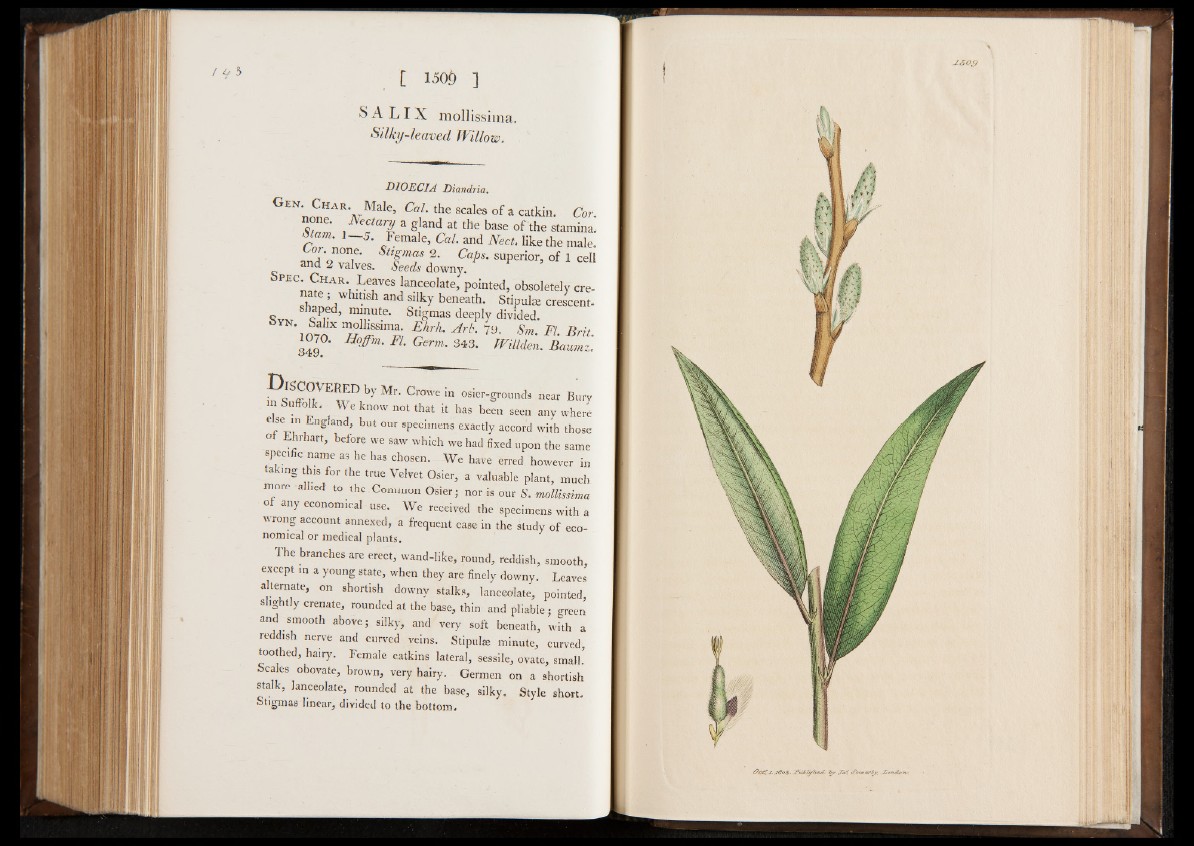
/ 4- 3
[ 15( $ 3
S A L I X mollissima.
Silky-leaved Willow.
DIO EC I A Diandria,
G en. Char. Male, Cal. the scales of a catkin. Cor,
none. Ne ctary a gland at the base of the stamina.
r 7! 1' ƒ .% # ! *¥ • and NecU like the male.
oi . none. Stigmas 2. Caps, superior, of 1 cell
and 2 valves. Seeds downy.
£C- C har Leaves lanceolate, pointed, obsoletely cre-
nate; whitish and silky beneath. Stipulse crescent
oVXT mJKUt.e* Stlgmas deeply divided.
o y n . Salix molhssima. E hrh. A rb . 79. Sm F l B r it
1070. H o ffm . Fl. Germ. 3 4 3 . W i l l d e n .B a u m t
’ c a- if E^ ED by Mr‘ Crmve in osier-grounds near Bury
n Suffolk. We know not that it has been seen any where
erV ,n , nS nd’ bUt °Ur sPecimens exactly accord with those
“ r lart5 before H saw which we had fixed upon the same
specific name as he has chosen. We have erred however in
taking this for the true Velvet Osier, a valuable plant, much
more allied to the Common Osier; nor is our S. mollissima
of any economical use. We received the specimens with a
wrong account annexed, a frequent case in the study of economical
or medical plants.
The branches are erect, wand-like, round, reddish, smooth,
except in a young state, when they are finely downy. Leaves
alternate, on shortish downy stalks, lanceolate, pointed
slightly crenate, rounded at the base, thin and pliable; green
and smooth above; silky, and very soft beneath, with a
reddish nerve and curved veins. Stipule minute, curved,
toothed, hairy. Female catkins lateral, sessile, ovate, small.
Scales obovate, brown, very hairy. Germen on a shortish
stalk, lanceolate, rounded at the base, silky. Style short.
Stigmas linear, divided to the bottom.